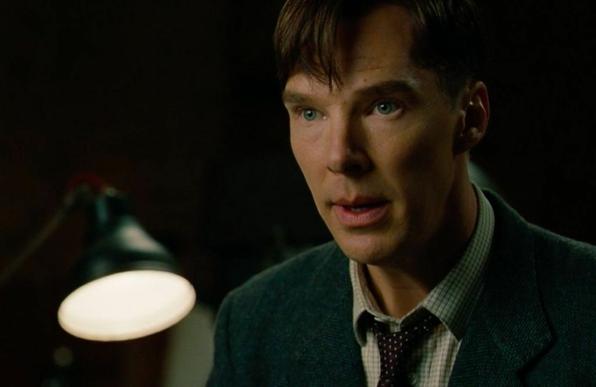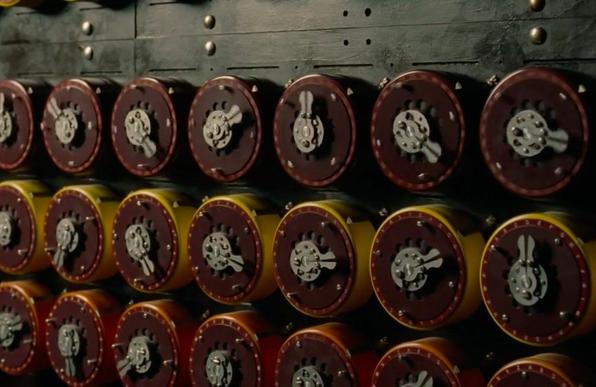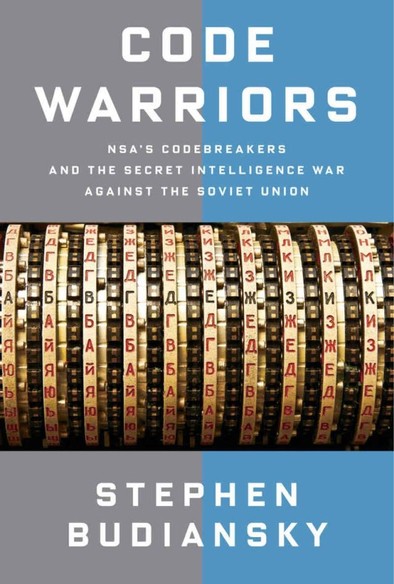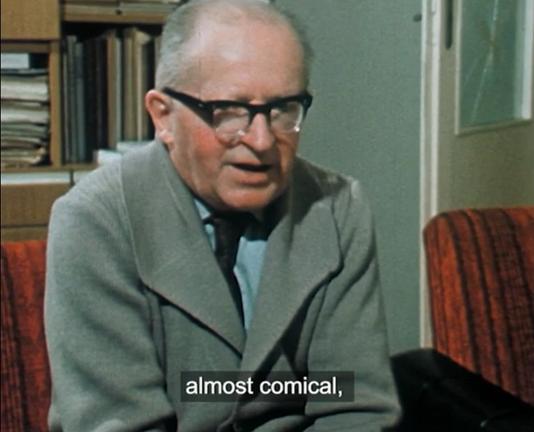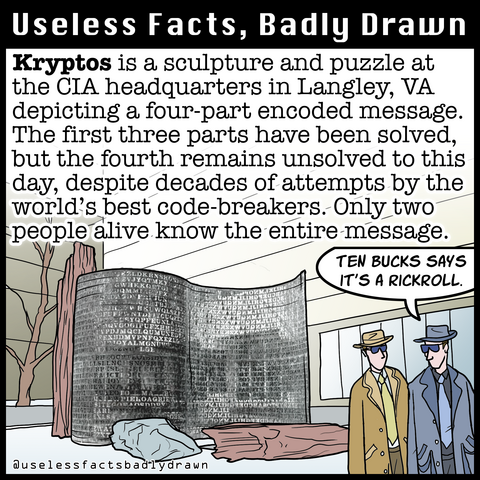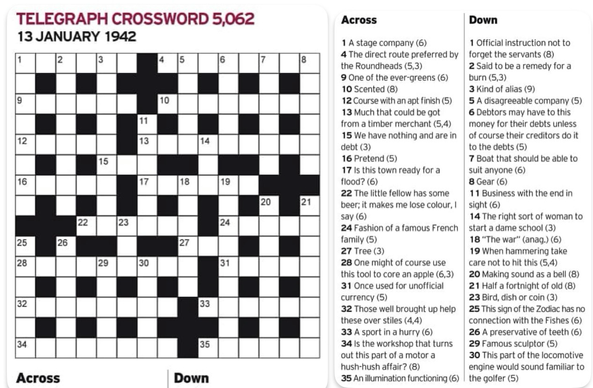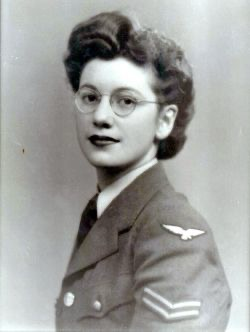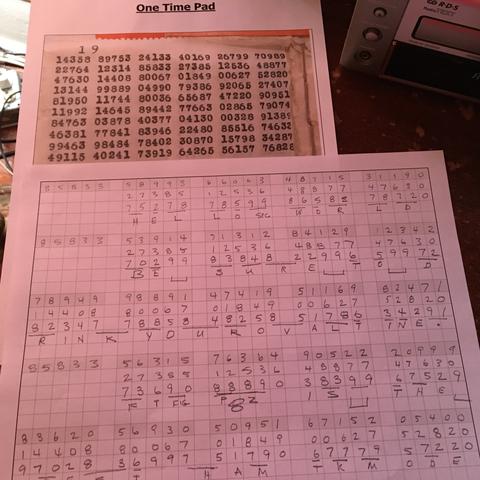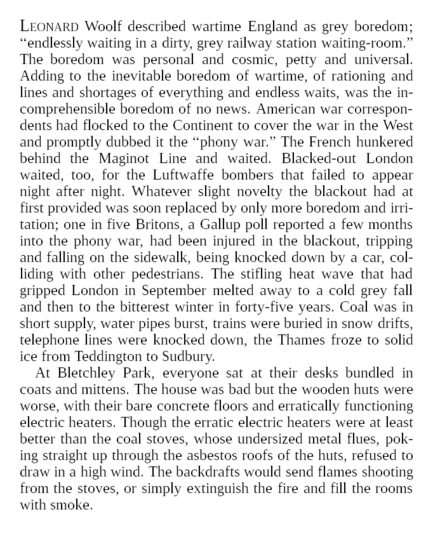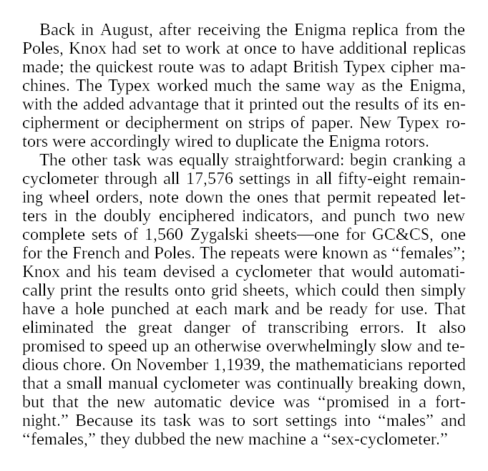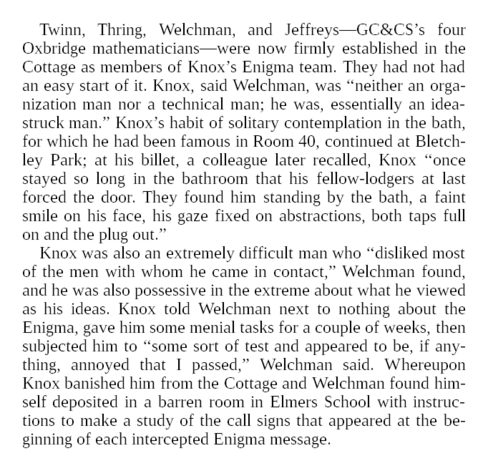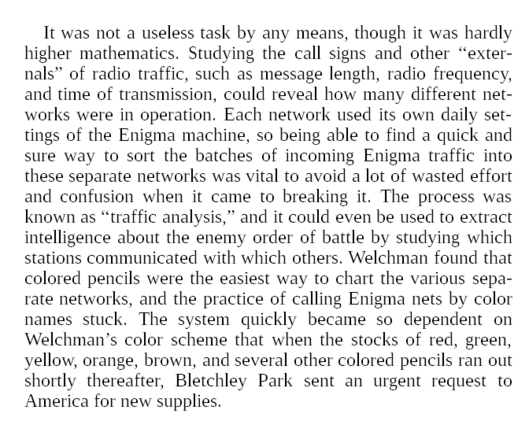"A lover of puzzles and crosswords while growing up in Pittsburgh during the Great Depression, Mrs. Parsons deciphered German military messages that had been created by an Enigma machine, a typewriter-size device with a keyboard wired to internal rotors, which generated millions of codes. Her efforts provided Allied forces with information critical to evading, attacking and sinking enemy submarines."
https://www.nytimes.com/2025/04/30/world/julia-parsons-dead.html
#CodeBreaking
One of the last of Bletchley Park's quiet heroes, Betty Webb, dies at 101.
Betty Webb MBE, one of the team who worked at the code-breaking Bletchley Park facility during the Second World War, has died at the age of 101.
For 30 years she never told anyone about her wartime experiences and it wasn't until the 1970s that she was informed that the prohibition on discussing Bletchley had been lifted.
#BletchleyPark #BettyWebb #WorldWar2 #Encryption #CodeBreaking #History
I've encoded a POEM w/ Affine cipher
Way to get the key:
a= ⭐
b= 🌈
Decipher this:
Yqb tevy ydout tkznkx, h gohlohuy ybhtb,
Wzubo fbmhm, h rdkvuhox mobbcb.
Khxbot zg pbhy, tz yqvukx tkvrbw,
H txpeqzux zg gkhizot, uvrbkx tevrbw.
#Cipher #Puzzle #CodeBreaking #Quote
First one solve gets a virtual hi5 :) and a artistic potato picture
Weekly output: Musk digitally deleting USAID, Arm vs. Qualcomm, U.K. vs. Apple, 8K TV, Bletchley Park
One of this week’s published stories began with reporting weeks ago; another began with notes and photos taken months ago.
2/3/2025: Musk’s Minions Deleting Digital Presence of US International Development Agency, PCMag
I could not just write about the weird digital erasure Elon Musk and his goons have been inflicting on the online presence of the U.S. Agency for International Development without reminding readers of three important bits of context: USAID does good and useful work (as vouched for in that quote from Georgetown University government-department chair Anthony Arend, four of whose classes I took as an undergrad 35-plus years ago); USAID constituted all of .4% of the federal budget in fiscal year 2024; Elon Musk’s tweets show no sign of him having any interest in the agency until January.
2/6/2025: Arm Drops Effort to Cancel Qualcomm’s Chip-Licensing Deal, PCMag
If you were considering buying a Windows laptop with one of Qualcomm’s power-efficient Snapdragon X processors, this should rank as very good news.
2/7/2025: Report: UK Orders Apple to Disable E2E Encryption on iCloud Backups Worldwide, PCMag
Writing up the Washington Post’s scoop about this dangerous demand by the U.K.’s Home Office gave me a crash course in looking up and citing legislation on Parliament’s Web site–without which I would have been writing about the Investigatory Powers Act without pointing people to the text of that 2016 statute and its 2024 amendments.
2/8/2025: In 2025, the Picture for 8K TVs (Still) Isn’t Looking Too Bright or Sharp, PCMag
I originally had delusions of writing this piece from CES with a Las Vegas dateline, but the weeks since then allowed me to get some additional numbers from the Consumer Technology Association and quiz another analyst as well as the head of the 8K Association.
2/9/2025: To See Codebreaking At Its Most Metal, Visit Bletchley Park, PCMag
Some of you may remember my writing a piece about Bletchley Park for the long-gone information-security publication The Parallax in 2018. I decided to revisit this museum of WWII codebreaking when my trip to London in October for Uber’s Go-Get Zero event (on Uber’s dime) left me with an afternoon free, and I’m glad I did because I was able to check out one exhibit that I’d had to skip earlier and see a few exhibits they’d added since then.
#8K #8KTV #AgencyForInternationalDevelopment #ArmHoldings #BletchleyPark #codebreaking #cryptography #EnigmaMachine #iCloudEncryption #InvestigatoryPowersAct #MuskCoup #Qualcomm #SnapdragonX #SnoopersCharter #UKHomeOffice #USAID
National Cryptologic Museum (NSA/CSS) New Temporary Exhibit on Project Stargate
https://www.nsa.gov/Press-Room/News-Highlights/Article/Article/3946210/new-exhibits-at-the-national-cryptologic-museum-unlock-your-curiosity/
#ycombinator #cryptology #foreign_signals_intelligence #cybersecurity #codemaking #codebreaking #National_Security_Agency #NSA #Intelligence_Community
Associated Press: UK spy agency releases annual Christmas card puzzle to uncover future codebreakers. “GCHQ, Britain’s electronic and cyber-intelligence agency, on Wednesday published its annual Christmas Challenge – a seasonal greeting card that doubles as a set of fiendishly difficult puzzles designed to excite young minds about solving cyphers and unearthing clues.”
Here is a link to the Audible version of Betty Webb’s book, “No More Secrets: My Part in #Codebreaking at #BletchleyPark and the Pentagon.” #CodeBreakers
https://www.audible.com/pd/B0C43LKLJJ?source_code=ASSORAP0511160006&share_location=pdp
@dangillmor
RE
... insiders are dishing to make themselves look good -- and you can't possibly know how much of what they say is true, or made up
So true (smile) the honest facts to "How #Biden Played #Trump" story will need time to come out
RE
We'll get a semi-authoritative piece at some point
Right, like The #BattleofMidway June 1942
Like how much of the #codebreaking did Nimitz, Fletcher and Spruance use to setup the Imperial Japanese Navy under Yamamoto, Nagumo and Kondo
#OnThisDay, July 9, in 1941, British cryptologists led by Alan Turing broke the Enigma code used by the German army to direct ground-to-air operations on the Eastern front (depicted in The Imitation Game, 2014)
#Movies #Film #Cinema #Cinemastodon #Letterboxd #TodayInHistory #Histodons #Cryptography #Codebreaking #Enigma #EnigmaMachine #TheImitationGame
Just discovered this weird channel on #YouTube. Some sort of #ARG / #CodeBreaking puzzle?
https://www.youtube.com/watch?v=VGK3Ag06VaU
(Content Warning: Flashy, glitchy distorted imagery, sudden loud noises)
Navajo WIndTalker level code metaphors in lyrics
Code Warriors: NSA's Codebreakers and the Secret Intelligence War Against the Soviet Union by Stephen Budiansky, 2016
Stephen Budiansky—a longtime expert in cryptology—tells the fascinating story of how NSA came to be, from its roots in World War II through the fall of the Berlin Wall. Along the way, he guides us through the fascinating challenges faced by cryptanalysts, and how they broke some of the most complicated codes of the 20th c.
When the Polish code breakers had found a German enigma key, it was sent to the British encrypted using... an enigma machine!
· flyingpenguin: Polish Embassy Interviews 1st Person to Crack Enigma: Marian Rejewski
(via Bruce Schneier).
Useless Facts, Badly Drawn #351: Kryptos.
.
.
#kryptos #art #sculpture #puzzle #codebreaking #encryption #cia #funfacts #didyouknow #strangebuttrue #webcomic #comics #uselessfacts #uselessfactsbadlydrawn
#puzzles #bletchleypark #crossword #ww2 #intelligence #codebreakers #codebreaking #telegraph #telegraphcrossword #dailytelegraph The infamous Bletchley Park “recruitment” crossword from WW2. Solve it within 12 minutes, and you could potentially have been working for British intelligence!
Good luck, your country’s counting on you, and no Googling the answers…
#internationalwomensday #joanclarke #ww2 #science #computing #bletchleypark #bletchley #codebreaking #enigma #alanturing #uk On international women’s day, here’s a name more people should know. Joan Clarke, one of the brilliant and elite team of code breakers at Bletchley Park in World War 2. If you haven’t seen “The Imitation Game” make sure you do. It’s a great movie!
I probably shouldn't leave this lying around. #HamRadio #ShortwaveRadio #cryptography #CodeBreaking #Ovaltine
Battle of Wits: The Complete Story of Codebreaking in World War II by Stephen Budiansky
Text instead of screenshots: https://cohost.org/lurkjay/post/4323122-battle-of-wits-the
#reading #nonfiction #books #history #codebreaking #cryptography #enigma #WorldWarII #WWII #bookstodon
